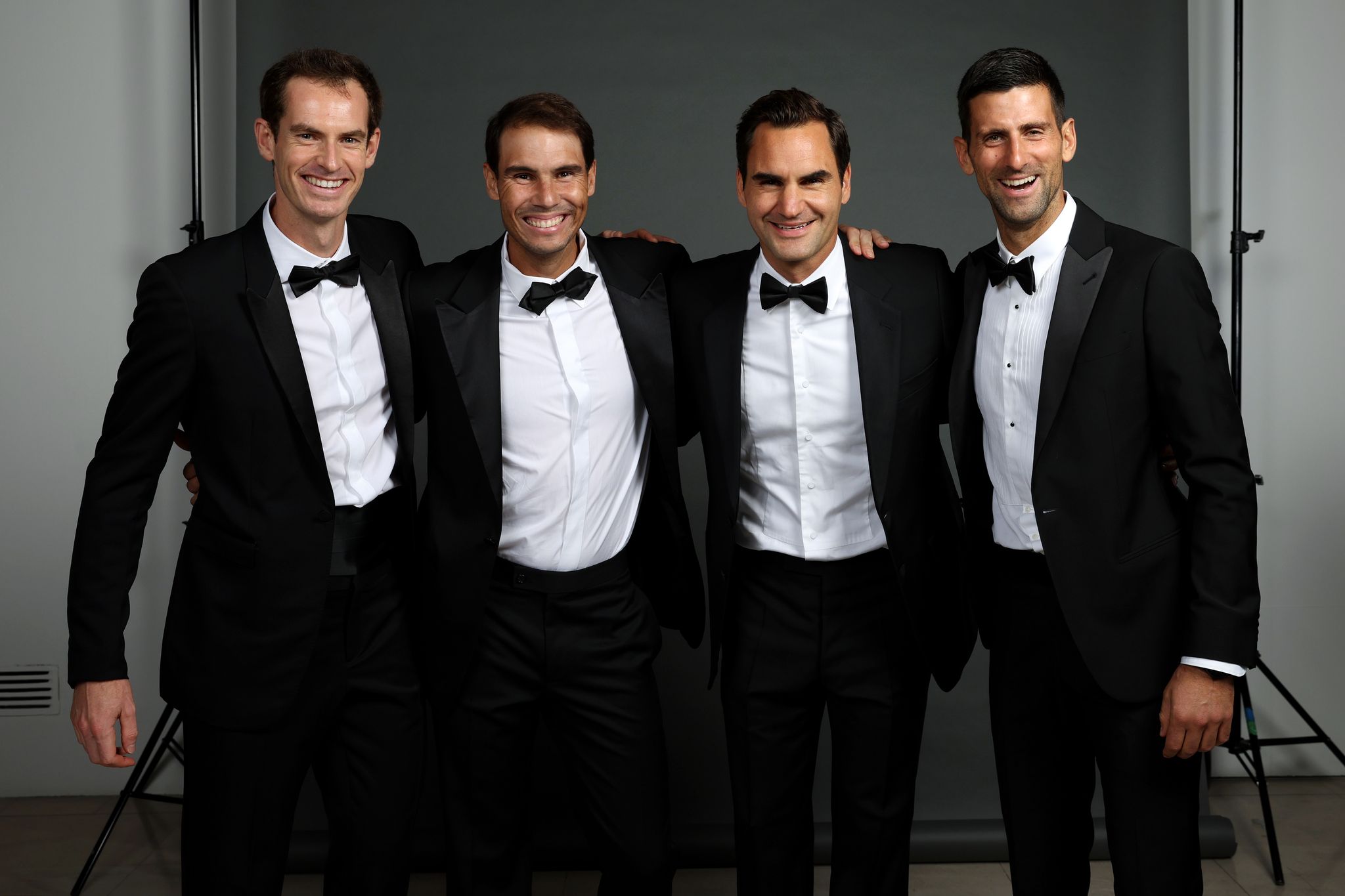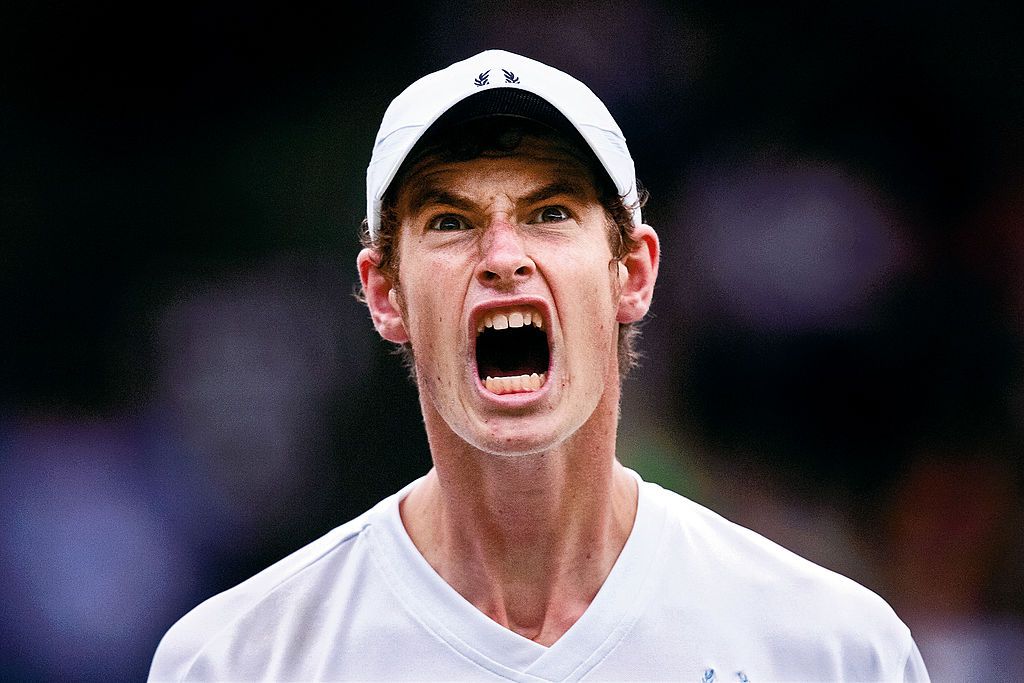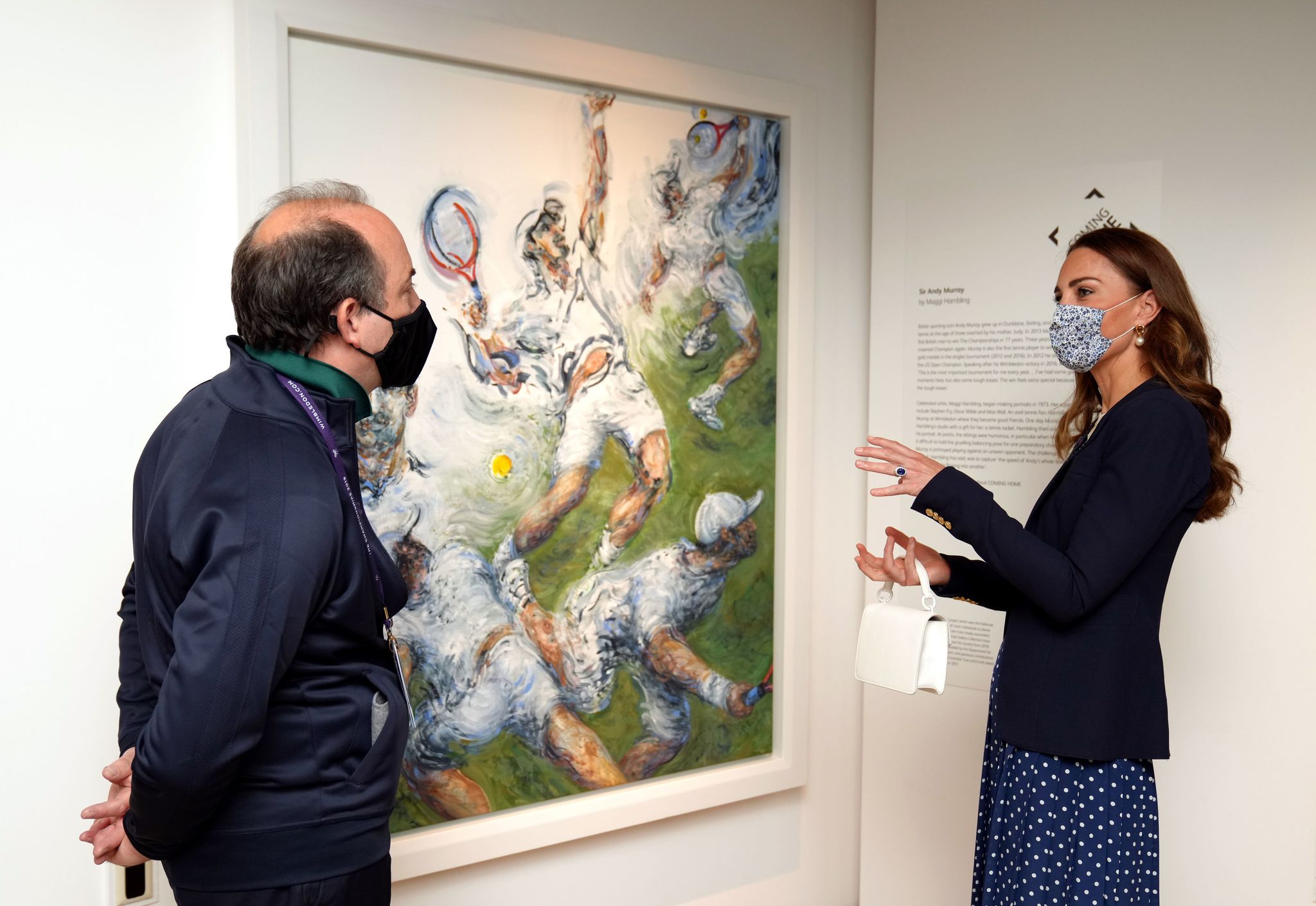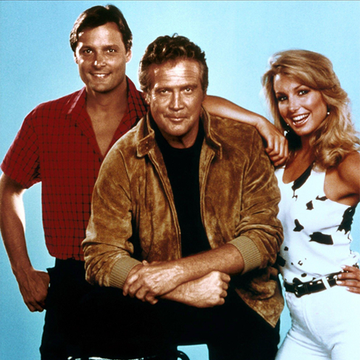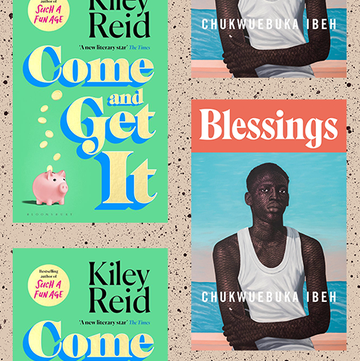Andy Murray thinks it might be a boring story, but he tells it anyway.
He splays his left hand out on the table. The nail of his ring finger has an odd jagged crack running across it like a geological fault line. When he was a kid, Andy was winding his brother Jamie up, gloating about finally having beaten him at an under-10s tournament in Solihull. The minibus ride back to Dunblane stretched out ahead of them. Eventually, the older Murray retaliated by punching his brother’s hand straight down into the armrest.
“My mum had to pull the van over,” Andy says now, looking at his hand. His nail immediately started going weird. “It had gone totally black and blue and I lost this nail and it's never grown back properly since then. That was my first sort of big win. I remember that one. And I've got the scars to prove it.”
Outside of our suite at Wimbledon, it’s all going on. It’s cool still at the end of May, jumper-and-jacket weather. The championships are a couple of months away. Benches are being power-sanded. Whole nurseries of bedding plants are lined up, hydrangeas and petunias in white, lilac and purple. On courts 16 and 17, two men in Wimbledon uniforms set wooden posts in sockets and roll out a net across the lawn between them.
Murray is a straightforward interview. When an answer is forming as it’s coming out of his mouth, he stares off at a 45-degree angle and talks to the middle distance. Once he’s warmed to what he’s saying, he looks right at you, occasionally grimacing slightly and rubbing his face with one hand. He’s particular about saying what he actually means, but you never get the sense he’s politely backing away from anything. He’s very drily funny, and that familiar level tone makes everything sound both very fair and very blunt.
(There is a reason for this. As I’m leaving after the interview, a makeup artist walks in to give Murray a face mask. He’s never had a face mask before. “Where’s that accent from?” the makeup artist asks as she sets up. “Ahm, well, I’m from Scotland originally,” says Murray. He explains that his slow, careful cadence came when he moved to Spain when he was a teenager, where very few people could understand his accent if he spoke as quickly as he normally did. So he slowed down, and his voice stayed like that).
Murray's here to chat as an American Express ambassador; he'll feature in three interactive games in the Fan Experience space in the Southern Village (including ‘Race To Wimbledon,’ developed in Fortnite, where players leg it past London landmarks to arrive at Centre Court in time). Looking at him now, Murray’s tan shows crows’ feet at the corners of his eyes, but that’s the only sign he’s in his mid-thirties. His hands are, as you might expect, absolutely massive.
He is, it’s worth pointing out, one of British sport’s great champions. During an era in which four of the greatest players in the history of men’s tennis converged at once – Murray, Rafael Nadal, Roger Federer and Novak Djokovic – Murray held his own with three grand slams, two Olympic gold medals and a Davis Cup victory. He’s proud of what he won during that era of frankly superhuman dominance.
“Nothing like that's been seen before in the sport,” he says, in that level tone. “And maybe we will see it again, but I don't think to that level. Just the consistency was what was incredible.”
Murray was always the guy who hung in there, making his opponents play another stroke, and another, and another. Now he’s just turned 36, and is still hanging in there. He has a metal cap on his hip bone after resurfacing surgery in 2019, and things ache after a four-hour match in a way they didn’t used to.
“That's why it's important to try and finish matches as quickly as possible,” Murray says. He blinks slowly, almost rolling his eyes at himself. “Which I currently seem incapable of doing.”
Murray has nothing to prove to anyone, but keeps proving it. When we speak he’s just won a title at Aix-en-Provence and placed second at the Qatar Open; a few weeks later he’ll pick up wins at Surbiton and the Nottingham Open.
He doesn’t have to keep playing. He’s done far more than anyone could have hoped he would, and nobody would blame him if he stopped. But he’s still working the circuit, winding up for the grand slams, playing the game. It’s hard enough doing anything in tennis even when everything’s going right.
“It's not easy to win in tennis,” he says. “You know, a lot of the guys that are on the professional tour, maybe in their career win one or two titles. It's just… it's hard. Most weeks in tennis you end up being… well, you're not a loser. But, you know, you have lost.”
When he first came to Wimbledon as a kid, on an even longer minibus trip down from Scotland, he wasn’t that bothered about the tennis; he was more into autograph-hunting by the practice courts.
“And yeah, interestingly…” He pauses and thinks briefly. “Well, maybe it's not interesting.”
It is quite interesting. While he was getting deep into other junior majors, he never played that well at junior tournaments here. But in 2005, aged 18, he got to the third round. “I went from no-one watching me to playing on Centre Court, Wimbledon, and there's six, seven million people watching on the TV.”
It was overwhelming. “I'm going back to, you know, the house where I'm staying and you know, there's paparazzi chasing me into my house and waiting outside the house and following you everywhere you go and then all of a sudden people are commenting on the way you talk, the way you behave, the way you look, all of those things, overnight.”
What was he like then? “How was I…” He thinks. “I was very shy.” He thinks again. “I guess in lots of ways, like lots of 18, 19 year olds, I thought the world was against me, and probably didn't listen very well.”
He didn’t do anything silly; he worked hard, and he loved tennis. He’s mellowed a bit, he thinks. His four kids are there to help level things out after a long day with a game of draughts. (They’re just getting into Uno too; it’s an exciting time.) Murray has started collecting art too. His wife Kim paints, and during one of Murray’s extended periods out injured, a friend tried to show him around a gallery. Murray didn’t find much he fancied.
“I was like, Nah, I really don't like that. That's terrible. It looks like my kid's done it or I could do that. But then yeah, as I started to go along to some galleries and things with him, I started to quite enjoy it.”
Maggi Hambling’s heaving, heavy seascapes are a particular favourite. She painted a portrait of him in 2019. Now he collects her work, and the pair are friends. There’s something about those seascapes which does fit with the raging, roiling presence Murray was on court for many years. He might be mellowing, but he did still smash a racket to bits after missing a simple volley at the Madrid Open a couple of months back.
“It's not that I'm not confrontational – like, I do love an argument still, but I don't think that everyone is arguing with me now. Whereas when I was younger, I probably felt that way. Like, it's one of the, it's…” He laughs. “I feel like I'm defending myself a bit here.”
Having been subject to everyone thinking they knew what was best for him, he’s keen for younger players to use him as a sounding board. “I try to make it clear to them that if they ever want to talk, like I'll be there,” he says.
He’s spoken to Emma Raducanu, another British champion whose career has been waylaid by injuries and unimaginable pressure. “But I'm not going to be sitting here giving my opinion on Emma or any of the other younger players, like to journalists or to their team members or, or messaging her and saying, ‘Oh, Emma, you really need to do this or that.’ Because I had that, and I found it unbelievably unhelpful because you obviously have a team around you that you're working with and hopefully that you trust and they're good people.
“And when you start getting all of these outside opinions from – ah – British tennis players who have been very good players, it's natural that you will see what they say and think, ‘Oh, should I be doing that?’ And it could be completely contradictory to what their team is telling them, what their coaches are telling them. And as an 18 year old, do you then look and go, Is what my team's telling me, is that rubbish?”
A couple of years ago it looked like that hip operation might have ended his career, but Murray is still here. The need to win, the fiery desire that cost him a fingernail, is still there too.
“I've spoken to a lot of players who have finished their careers,” he says, looking at the table, “and pretty unanimously they've all said, like, to play as long as you can, whilst you still are able to compete and whilst you're enjoying it because nothing... nothing replaces it.”
Sir Andy Murray OBE returns as an American Express ambassador this summer to help tennis fans make unforgettable memories at the Amex Fan Experience onsite at The Championships, Wimbledon. To find out more, visit wimbledon.com/americanexpress


